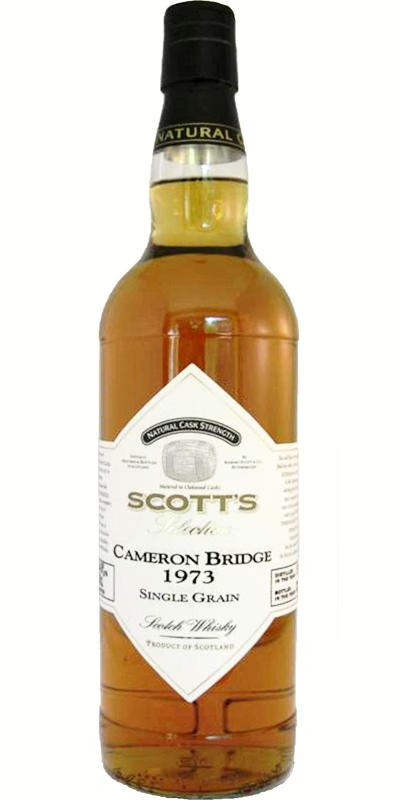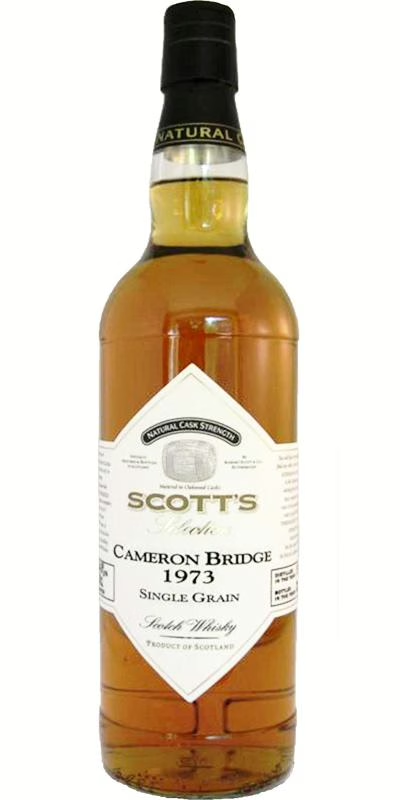It’s been a few weeks since we last had old grain whiskies, so today, we review two Cameronbridge coming from the same independent bottler, distilled on the same year and bottled at the same age on the same year as well. Will they be the same as well? Let’s find out, as we review two 1973 Cameronbridge 37-year-old from Scott’s Selection.
Cameronbridge Distillery
Cameronbridge Distillery, located in Fife, Scotland, has been a key player in the grain whisky sector since its founding in 1824. It stands as one of Scotland’s oldest grain distilleries and pioneered the use of continuous column still distillation, replacing traditional pot still methods for grain whisky production. Currently, Cameronbridge operates three large column stills (Coffey stills), enabling it to produce grain whisky efficiently on a large scale.
The distillery has an annual production capacity of around 40 million litres of pure alcohol, making it one of the largest grain whisky producers in Scotland. Cameronbridge produces grain whisky primarily destined for blended Scotch whiskies, contributing a lighter (and cheaper) spirit that complements malt whiskies in popular blends.
Cameronbridge has a direct historical connection with Haig whisky, one of the oldest Scotch whisky brands. Haig originated as a brand associated with grain whisky, and Cameronbridge played a significant role in producing the grain whisky that formed the basis of Haig blends and grain whiskies.
Ownership of Cameronbridge has changed hands several times over its history. Today, Cameronbridge operates under the ownership of Diageo, the world’s largest premium drinks company. Previously, the distillery formed part of the portfolios of various companies, including the Distillers Company Limited (DCL) and later Guinness PLC, both major players in Scotch whisky production consolidations. Diageo emerged following the merger of Guinness PLC and Grand Metropolitan in 1997, consolidating many historic distilleries and whisky brands under its umbrella.
Besides its primary function in blended whisky, Cameronbridge occasionally releases single grain whiskies, showcasing the character of grain whisky distilled with continuous column stills (or should I say, the lack thereof). The distillery remains a cornerstone of Scotland’s whisky industry, balancing a rich heritage with large-scale, modern production.
Cameronbridge 1973 (41.4% ABV) Scott’s Selection (2010) Review
This Cameronbridge was distilled in 1973 and bottled by Scott’s Selection in 2010 at cask strength —41.4% ABV, surprisingly modest for its age. Based on available details (including Whiskybase), it appears to be non-chill-filtered and naturally coloured, though there’s no confirmation of it being a single cask release. While no longer available at retail, bottles may occasionally resurface at auction – so patience (and luck) may reward eager collectors.

Colour:
Burnished.
Nose:
Neat: The nose delivers solid intensity despite the modest 41.4% ABV (its natural cask strength). Clear notes of vanilla, wood, honey, fudge, butterscotch, and faint sawdust emerge. Notably, no harsh grainy or solvent aromas appear.
Palate:
Neat: The palate avoids excessive graininess but hints towards bourbon-cask maturation: dominant vanilla, honey, coconut, and caramel, followed by wood spices. Dark chocolate and pronounced nougat develop, with subtle ginger, nutmeg, and pepper in the background.
Finish:
Caramel, hints of nougat, but mostly caramel and fudge. With a pinch of pepper. Good length, as it lasts for several dozens of seconds.
Comments:
This Cameronbridge may not break new ground for an aged grain whisky, but it delivers excellent quality – clean, free of flaws, and far from the flat, industrial profile often associated with budget grains. The 41.4% ABV defies expectations, offering a rich mouthfeel and surprising intensity on both nose and palate. A pretty good pick from Scott’s Selection.
Rating: 7/10
Cameronbridge 1973 (44.9%) Scott’s Selection (2010) Review
This Cameronbridge follows the same profile as the previous expression: distilled in 1973 and bottled in 2010 at cask strength by Scott’s Selection. The ABV here is slightly higher, at 44.9%, and it was bottled without chill filtration or added colour. There is no indication that it comes from a single cask. Like the other, it is sold out, so finding a bottle will require luck at auction.

Colour:
Slightly darker than russet.
Nose:
Neat: Though the ABV sits higher than the previous Cameronbridge (44.9% vs. 41.4%), the nose presents with slightly less intensity – suggesting a less active cask. The aromatic profile remains familiar, featuring vanilla, caramel, fudge, honey, and butterscotch, though all notes register a notch softer. A faint sharpness distinguishes it from its sibling.
Palate:
Neat: The palate contrasts sharply with the first expression, offering greater intensity and a thicker mouthfeel. The flavour profile shifts towards darker territory: less sweetness and vanilla, replaced by deep dark caramel, nutmeg, pepper, butterscotch, concentrated caramel, and a firmer, more mature nougat (whereas the 41.4% evoked softer nougat).
Finish:
The finish intensifies further, extending in length with dominant nougat, subtle vanilla, forest honey, and a touch of pepper.
Comments:
This likely shares origins with the other Cameronbridge – either a sister cask or a vatting of related casks – but the differences are clear. While the nose lacks the same intensity, the higher ABV (44.9%) delivers a more expressive palate and a longer, more layered finish. Not identical by any means, not the same strong points, but it deserves the same rating.
Rating: 7/10
Obviously, in this case, I’ve tried a vat of those two: the nose is less expressive than the 41.4% alone. The palate is a perfect mix of the two, with none taking over the other one. But in the end, the nose of the 41.4% alone is better, as well as the 44.9% palate and finish by themselves.